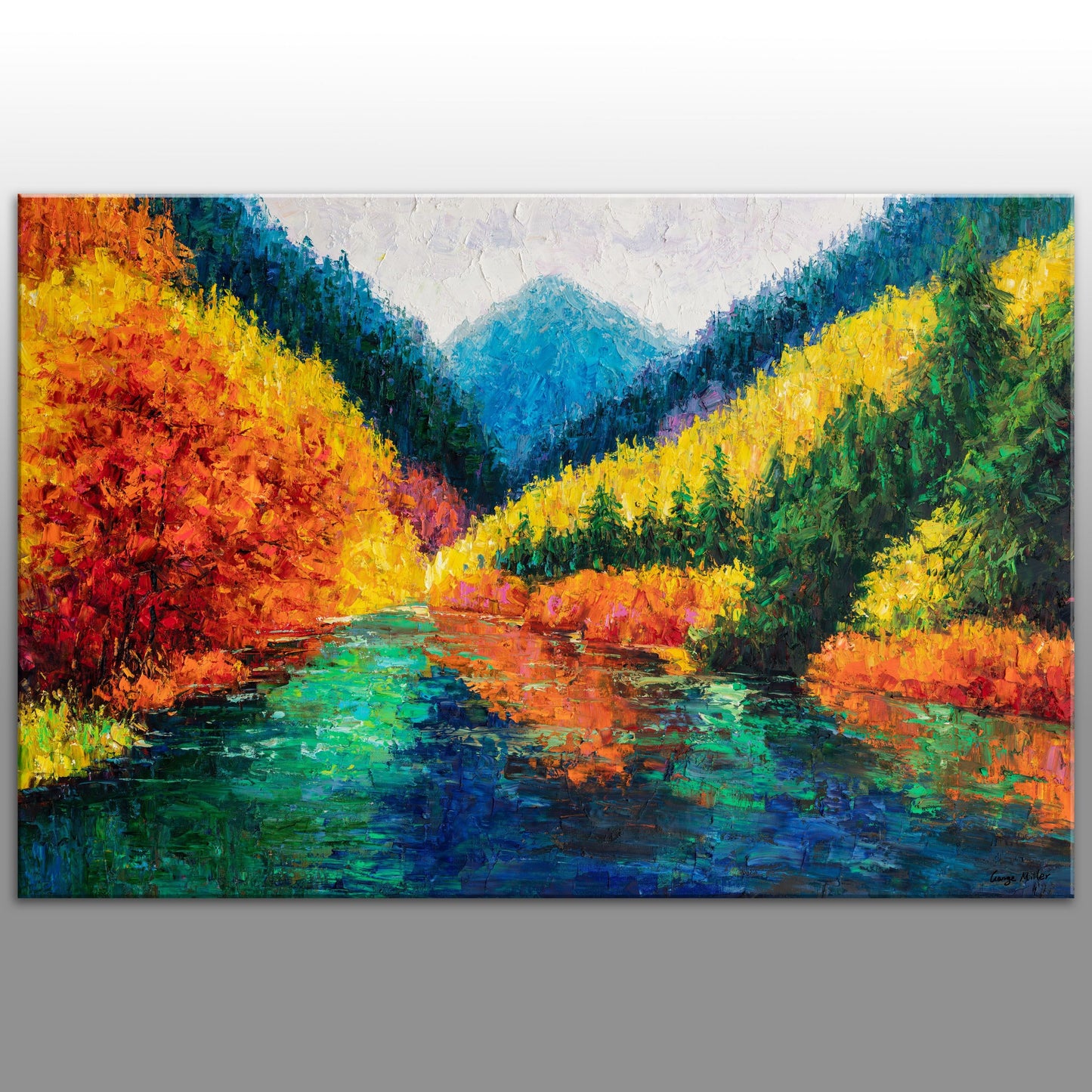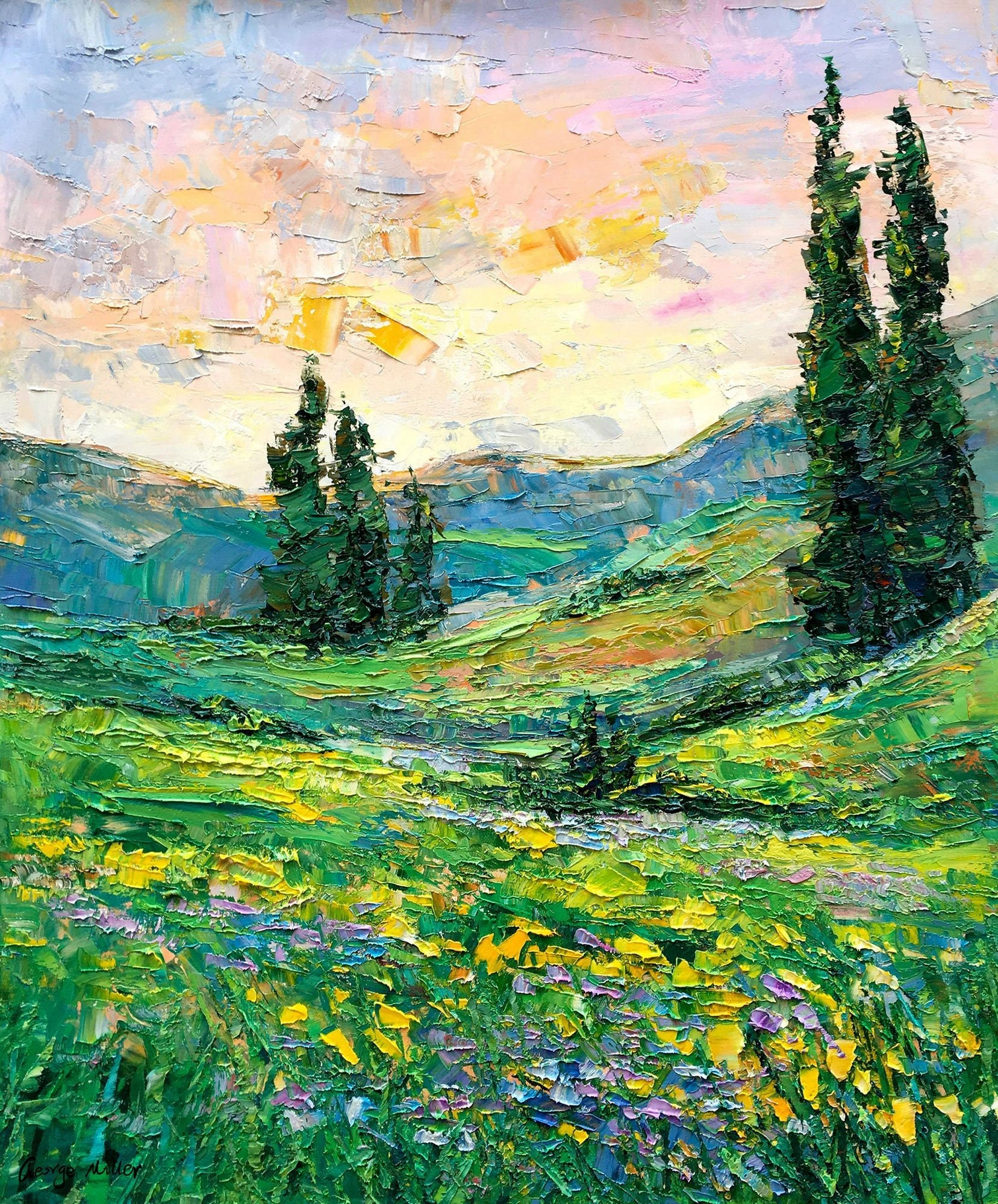Exploring All Regarding Oil Paints: A Guide to Understanding Their Charm and Worth
Oil paints have captivated target markets for centuries, supplying a glimpse right into the imaginative mastery of numerous ages. Their abundant history is linked with innovative strategies and profound emotional expression. Understanding the products and techniques behind these art work can boost admiration. Additionally, the market for oil paints offers possibilities for capitalists and enthusiasts alike. As one discovers this remarkable globe, the concern arises: what makes an oil painting truly useful?
The History of Oil Painting: A Trip Through Time
Oil paint has roots that date back to old times, it absolutely flourished throughout the Renaissance, when artists found its convenience and abundant shade capacity. Early instances can be traced to the 7th century, with methods evolving significantly across societies. The tool became prominent in Northern Europe in the 15th century, especially through the jobs of artists like Jan van Eyck, who pioneered its usage for thorough realism and vivid hues. This duration marked a departure from tempera paints, allowing for better depth and appearance. As oil paint spread, it influenced numerous musicians, leading to work of arts by distinguished figures such as Leonardo da Vinci and Rembrandt. The tool's heritage proceeds, shaping the art world well right into modern times.
Comprehending Oil Repaints: Products and Techniques
As artists explore the globe of oil paints, they encounter a diverse array of products and methods that define this tool. The primary parts of oil paint include pigments, which provide shade, and drying oils, such as linseed, that bind the pigments and assist in application. Various ingredients can change the paint's texture and drying out time, improving adaptability. Strategies like glazing, where clear layers are accumulated, and impasto, which entails applying thick paint, allow for different visual effects. Additionally, using brushes, palette blades, and even fingers can create unique appearances and coatings. Understanding these materials and methods enables musicians to fully share their creative thinking and accomplish the desired influence in their art work.
The Function of Shade in Oil Paintings
Shade plays a crucial function in oil paintings, affecting both aesthetic allure and psychological vibration. Comprehending color theory fundamentals, including the partnerships in between hues, can improve a musician's capability to communicate mood and environment. Additionally, mastering color mixing techniques enables greater deepness and richness in a painting's scheme.

Shade Concept Fundamentals
Comprehending color concept is vital for musicians working with oil paints, as it develops the foundation for developing aesthetically engaging and unified make-ups. Shade concept includes the research of just how shades communicate, the shade wheel, and the connections between key, second, and tertiary colors. Artists make use of complementary shades to improve contrasts and develop prime focus, while analogous shades promote unity and cohesiveness within an item. Additionally, the ideas of cozy and great shades affect the understanding of deepness and room in a painting. Understanding these concepts allows musicians to manipulate shade efficiently, assisting the visitor's eye and connecting their designated message. Mastery of shade theory eventually enhances a musician's capability to share feelings and ideas with their job.
Emotional Influence of Color
The emotional influence of shade in oil paints plays an important duty in just how visitors connect and perceive with artwork. Colors stimulate particular sensations and state of minds, affecting the visitor's mood. Cozy shades like reds and oranges can develop a sense of warmth and energy, while trendy tones such as blues and greens usually evoke calmness or self-questioning. Artists tactically select color palettes to improve narrative components, guiding the target market's psychological trip. The saturation and contrast of colors better amplify these results, drawing attention and producing emphasis. Eventually, the interplay of shades in oil paintings not only boosts their aesthetic allure yet likewise works as a powerful tool for psychological expression, improving the visitor's experience and analysis.
Color Combining Techniques
While several facets of oil painting add to the total structure, mastering color blending strategies is essential for attaining preferred effects and depth. Color mixing can be approached via different techniques, consisting of the additive and subtractive procedures. Additive mixing entails integrating colors of light, while subtractive blending depends on pigments, where shades blend to develop brand-new tones. Artists commonly use a minimal combination to develop unified works, comprehending the partnerships in between primary, secondary, and tertiary colors. Methods such as glazing and scumbling better boost depth and brightness. By skillfully blending colors, a musician can evoke emotions, produce centerpieces, and achieve a feeling of realism, eventually boosting the paint's aesthetic and psychological impact.
Famous Oil Painters and Their Iconic Works

Famed for their mastery of shade and method, oil painters have developed a few of one of the most celebrated artworks in history. Popular musicians like Vincent van Gogh astounded audiences with his emotive brushwork in "Starry Night," while Claude Monet's "Impression, Sunup" laid the foundation for Impressionism. Leonardo da Vinci's "Mona Lisa" remains an enduring sign of imaginative wizard, showcasing his skill in capturing human expression. Rembrandt's "The Evening Watch" illustrates his innovative use of light and darkness. Other significant numbers include Pablo Picasso, who transformed modern art with his strong testing in works like "Les Demoiselles d'Avignon," and Georgia O'Keeffe, whose lively depictions of landscapes and flowers assisted define American innovation. Each musician's unique design added considerably to the oil painting landscape.
How to Assess the High Quality of an Oil Painting
Assessing the high quality of an oil painting includes a mindful analysis of workmanship techniques, in addition to an evaluation of shade and structure. Observing brushwork, layering, and the application of paint can disclose the artist's ability level. In addition, the interplay of shades and the total arrangement of elements add significantly to the painting's aesthetic value.
Evaluating Workmanship Methods
A meticulous analysis of workmanship methods is vital for determining the high quality of an oil paint. Evaluators must initially take a look at the application of paint; thick, distinctive brushstrokes may suggest an experienced hand, while excessively uniform applications might indicate a lack of depth. oil paintings for sale. The layering method is additionally vital; the existence of lusters and varied thickness can enhance luminance and complexity. Additionally, the top quality of the products used, such as the canvas and pigments, plays a considerable function in sturdiness and total aesthetic. Attention to detail in elements like sides and shifts in between colors mirrors the artist's commitment to their craft. Ultimately, these strategies add to the painting's emotional impact and market price, acting as indicators of the musician's skill and intent
Analyzing Shade and Structure
While evaluating the quality of an oil paint, one must focus on the interplay of color and composition, as these components are fundamental to the artwork's total influence. Shade choices can develop and evoke emotions state of mind; consequently, the artist's palette must be taken a look at for consistency and comparison. A well-balanced composition guides the audience's eye and creates a sense of unity. Artists typically employ methods like the policy of thirds or leading lines to enhance visual interest. In addition, using light and darkness can include deepness, boosting the three-dimensionality of the painting. Eventually, a successful oil paint marries color and make-up, engaging the customer and welcoming a much deeper recognition of the musician's vision and strategy.
Caring for and Preserving Oil Paintings
Correct care and conservation of oil paintings is crucial for maintaining their integrity and durability. To safeguard these art work, it is crucial to present them far from direct sunlight, which can trigger fading and discoloration. Maintaining a secure setting with regulated temperature level and humidity further aids in preventing damages. Cleaning up should be done gently using a soft, dry fabric, preventing any extreme chemicals that can harm the paint or varnish. Normal assessments for signs of wear and tear, such as breaking or flaking, are recommended. When carrying or saving oil paintings, appropriate extra padding and framing are required to avoid physical harm. Inevitably, attentive treatment contributes to the aesthetic appeal and worth of oil paints over time.
The Marketplace for Oil Paintings: Accumulating and Spending
Understanding the market characteristics for oil paintings is necessary for collectors and financiers alike. The worth of these art work is influenced by various factors, consisting of the musician's online reputation, historical relevance, and existing fads. Enthusiasts typically look for items that reverberate personally while considering possible appreciation in worth. Galleries and auctions work as main locations for trading, with prices varying based upon need and rarity. Investing in oil paintings calls for research into the market, along with an understanding of authenticity and provenance. Furthermore, emerging artists may offer chances for considerable returns, while established names can command high rates. Generally, a tactical method to collecting can produce both aesthetic satisfaction and monetary benefits.

Frequently Asked Inquiries
What Are the Environmental Influences of Oil Painting Products?
The environmental impacts of oil paint materials consist of the release of unstable organic compounds (VOCs), harmful waste generation, and source removal for pigments. These aspects add to contamination and ecological deterioration, elevating concerns amongst environmentally conscious artists and customers.
Just How Do Various Canvases Influence Oil Paint Outcomes?
Various canvases affect oil painting results substantially. Surface area, texture, and absorbency top quality can modify paint application, drying out times, and color vibrancy. Musicians frequently select specific canvases to achieve preferred effects and enhance more info their artistic expression.
Can Oil Paintings Be Restored if Damaged?
Oil paintings can without a doubt be recovered if damaged. Professional conservators make use of various strategies to repair splits, clean surface areas, and address discoloration, making certain that the art work maintains its initial beauty and worth for future generations.
What Are the Indications of an Original Oil Paint?
The indications of an original oil painting include visible brush strokes, structure variations, and an unequal canvas weave (oil paintings for sale). Additionally, credibility might be confirmed with provenance, trademarks, and the visibility of a varnish layer unique to oil mediums
Just How Has Modern Technology Influenced Modern Oil Paint Techniques?
Modern technology has actually greatly affected modern-day oil paint strategies by presenting digital devices for planning, enhanced products for texture and longevity, and on the internet platforms for sharing and marketing art, consequently increasing musicians' creative possibilities and audience reach. Oil painting has origins that date back to ancient times, it absolutely prospered during the Renaissance, when artists uncovered its convenience and rich shade capacity. The emotional effect of shade in oil paints plays a vital function in just how viewers attach and regard with art work. While many facets of oil paint add to the overall make-up, understanding color mixing methods is essential for attaining wanted effects and deepness. Examining the top quality of an oil paint involves a careful analysis of craftsmanship strategies, as well as an evaluation of color and structure. While evaluating the top quality of an oil paint, one have to concentrate on the interplay of shade and make-up, as these aspects are fundamental to the artwork's overall influence.
Comments on “Browse Breathtaking One-of-a-kind Oil Paintings for Sale Online”